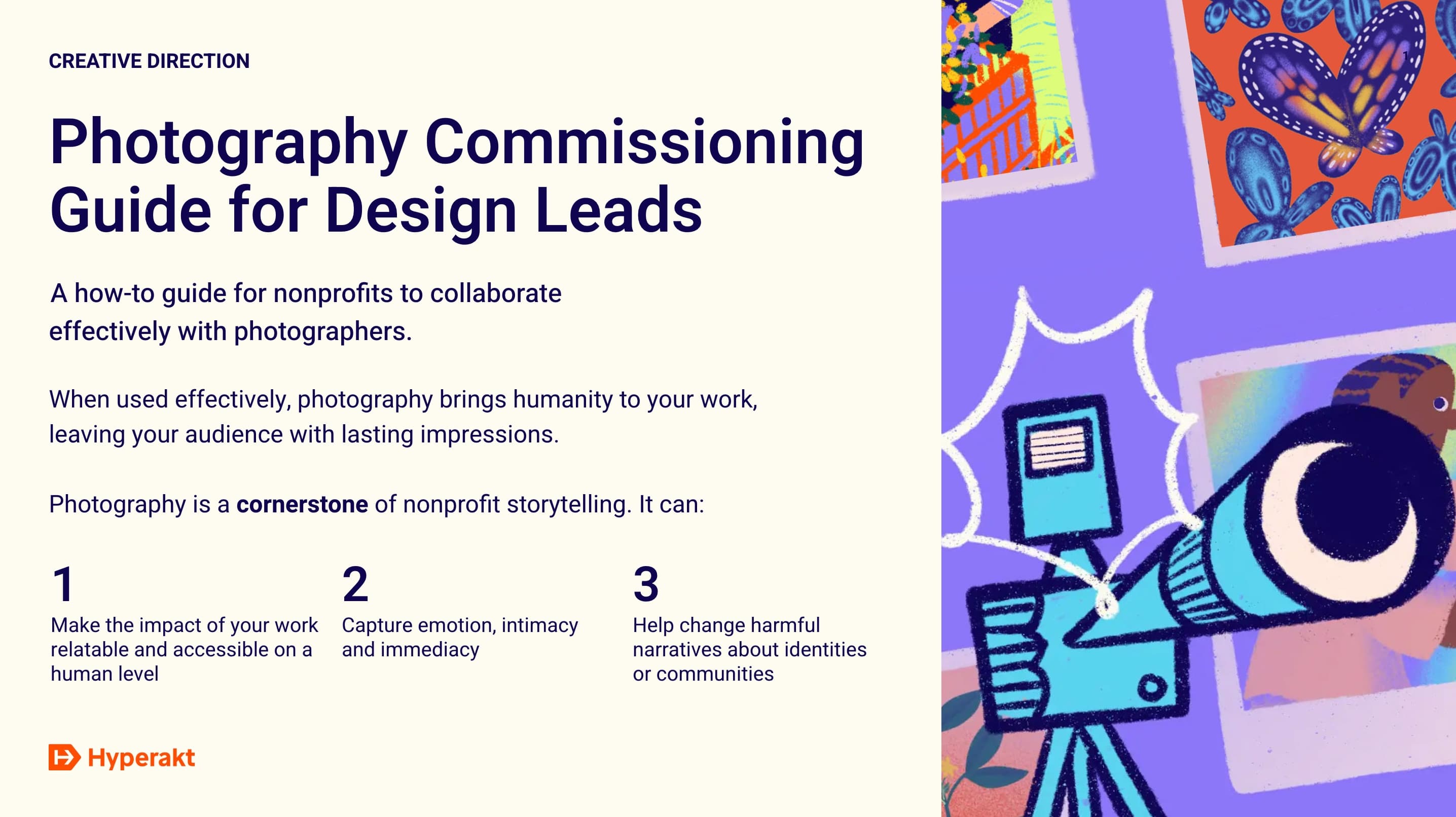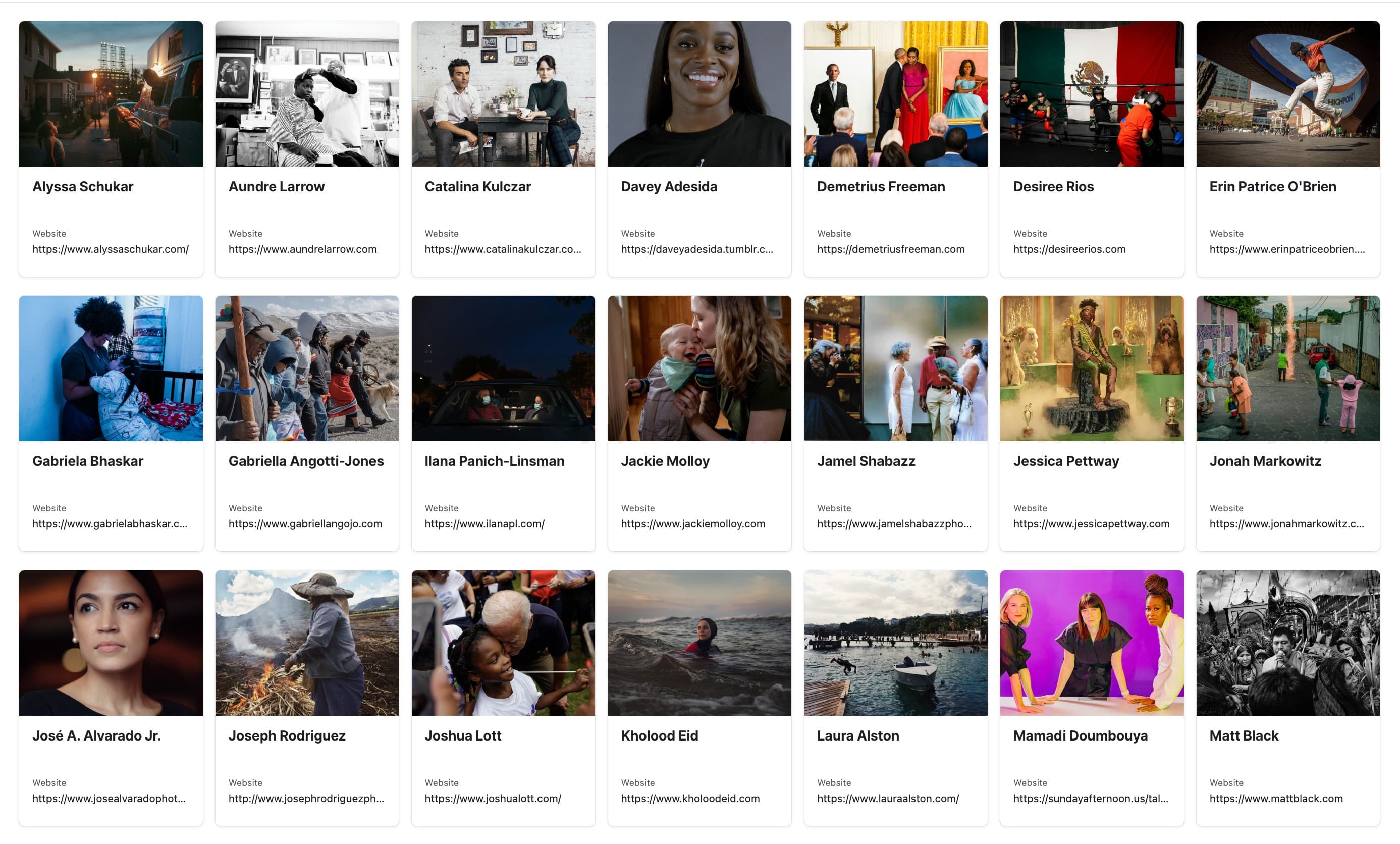The Art of Commissioning Photography for Nonprofits
A single photograph can capture a moment, tell a story, and spark action.
We’ve been taking pictures for 200 years. As they started becoming commonplace, the poet Oliver Wendell Holmes called photos “a mirror with a memory.” In today’s era of low trust in institutions and slippery artificial realities, authentic images are more valuable, and necessary, than ever. Used thoughtfully, photography brings humanity to your work and leaves lasting impressions. That’s why organizations we work with like the Ford Foundation, Climate Lead, and Brooklyn Defender Services invest in a combination of commissioned and curated imagery to bring their missions to life.

Illustration by Merit Myers
Nonprofits use words—lots of them—to explain complex, sometimes messy work. But the old aphorism is true: A picture is worth a thousand words. In the age of dwindling attention spans, you need images that connect your organization’s purpose and promise with reality.
A Mirror with a Memory
Unlike illustration, which can be conceptual and imaginative, photography captures real people, real moments, and real environments. Photography can capture the intimacy and immediacy of the impact your organization wields in the world in a way that words simply cannot. You can use copy to describe your programs in under-resourced communities, but a single snapshot of a smiling child in a classroom hits your audience right in the heart; a photo of a reunited family joyfully hugging speaks volumes about your criminal justice reform impact.
Images don’t just complement words, they can transcend them. A well-composed photograph can evoke emotion, build trust, and make your mission memorable in ways copy alone can’t.

Download the Photography Commissioning Guide
Subscribe to our Insights newsletter to download the guide.
Ethical Responsibility
Using photography effectively requires nonprofit comms leaders to approach creative direction thoughtfully and intentionally. You’re not just choosing pretty pictures, you’re representing real people. A single photo can reinforce stereotypes or dismantle them, empower people or exploit them.
When you pick photos, remember they show real people, not just pretty scenes. Always get clear permission by telling people where and how long you’ll use their images. Let them guide how they’re shown by asking, “How would you like to be portrayed?” And respect their dignity by avoiding stereotypes or pity.

Download Hyperakt's Photography Commissioning Guide for Nonprofit Design Leads to access our curated selection of incredible photographers and photo libraries.
Successful Collaboration with Photographers
Commissioning photography is about finding creative partners who understand how photography can authentically and ethically represent your work and your people. It requires clear communication and strong collaboration between your team and the photographer.
While we go into this in more depth in our Photography Commissioning Guide, here’s a high-level roadmap for successful commissions:
- Creative Brief: Define your purpose, target audience, tone, and must-have shots.
- Pre-Production: Determine locations, assemble your team, make arrangements, secure consent.
- Shoot Day: Engage with subjects, review photos in real-time to ensure they meet the brief.
- Image Selection: Give timely feedback, participate in selection, and flag ethical or usage issues.
- Post-Production: Edit for clarity, no over-retouching, and honor your AI guidelines.
By grounding every shoot in a clear creative brief—outlining your audience, goals, brand voice, and visual style—you set the stage for success. Sharing logistical and ethical guidelines up front (from consent protocols to AI-use boundaries) ensures your photographer works confidently and respectfully. Thoughtful pre-production planning, close on-set collaboration, and joint selects and edits turn each phase into an opportunity to refine your vision. This transparent, well-orchestrated process guarantees that the final images authentically reflect your mission and resonate with your audience.
Finding the Right Photographer
Just like illustrators, photographers are more than just skilled artists—they are interpreters of your story. The right photographer doesn’t just take photos; they understand how to translate your nonprofit’s vision into compelling, mission-aligned images.
When evaluating photographers, you’ll want to ask yourself:
- Are they good communicators?
- Does their portfolio match your brand’s tone and style?
- Have they documented communities with respect and nuance?
- Can they adapt to your project’s needs and schedule?
- Would it make sense to hire in-house for ongoing work?
Why Photography Matters
By giving photography the importance it deserves—treating it as a strategic, ethical, and human-centered tool—you can snap people out of their daze of inattention and help them connect with your world. Whether on social media, in fundraising campaigns, or on your website, when you tell your community’s story with honesty and heart, you give people reasons to believe in and engage with your work.
Next Steps
Our Photography Commissioning Guide is designed to guide in-house creatives through every step of the process, from defining your creative vision to finding the right photographer and ensuring accurate representation. It’s time to lean into photography that authentically represents your nonprofit’s impact.
Curious how photography guidelines can unlock your nonprofit’s brand? Get in touch.

Download the Photography Commissioning Guide
Subscribe to our Insights newsletter to download the guide.


